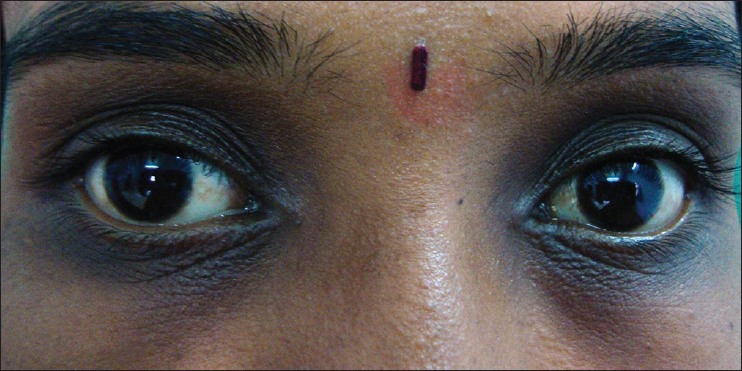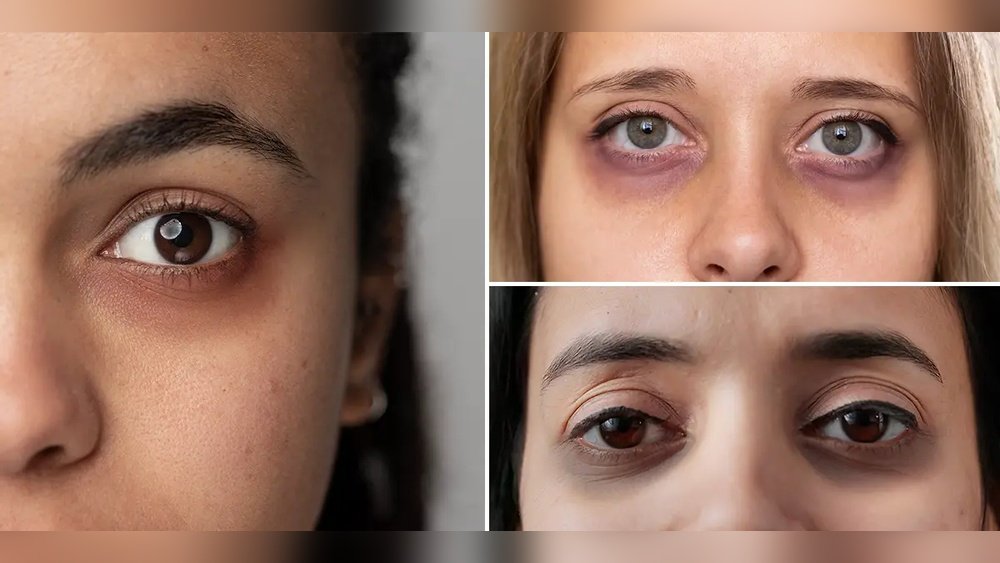Are you struggling with those stubborn dark circles under your eyes and wondering if it’s just tiredness or something else? You might actually be dealing with hyperpigmentation, but how do you tell the difference?
Knowing whether your under-eye discoloration is caused by dark circles or hyperpigmentation is key to choosing the right treatment and finally brightening your eyes. You’ll discover the simple ways to identify what’s really going on beneath your eyes, why it happens, and what you can do about it.
Keep reading—your eyes deserve to look refreshed and radiant again!
Types Of Dark Circles
Dark circles under the eyes appear in different forms. Understanding the types helps in choosing the right treatment. These circles may result from pigment, blood vessels, or skin structure. Each type has unique causes and features. Below are the main types of dark circles.
Pigmented Dark Circles
Pigmented dark circles show as brown or dark patches. They happen due to extra melanin in the skin under the eyes. Sun exposure and genetics often cause this pigmentation. It is common in people with darker skin tones. Treatments focus on reducing melanin and protecting skin from sunlight.
Vascular Dark Circles
Vascular dark circles have a bluish or purple tint. They occur when blood vessels under the thin eye skin become visible. This happens because of poor blood circulation or blood pooling. Thin skin in this area makes veins more noticeable. Cold compresses and improving circulation can help reduce their look.
Structural Dark Circles
Structural dark circles appear as shadows or hollows under the eyes. They result from bone structure or fat loss around the eye area. These circles are not caused by pigment or blood vessels. Aging or genetics often cause the hollow look. Filling treatments or skincare can improve their appearance.

Credit: www.mdpi.com
Causes Of Hyperpigmentation
Hyperpigmentation under the eyes happens when skin produces too much melanin. Melanin is the pigment that gives skin its color. Darker patches form due to excess melanin. Various factors cause this increased melanin production.
Understanding these causes helps in choosing the right treatment. Some causes are natural, while others result from external damage or skin changes.
Genetic Factors
Some people inherit a tendency to develop hyperpigmentation. Their skin cells produce more melanin naturally. This trait often appears in families. It is more common in people with darker skin tones. Genes influence how skin reacts to light and injury.
Sun Exposure
Sunlight triggers melanin production to protect the skin. Too much sun causes uneven melanin patches. The under-eye area is delicate and easily damaged by UV rays. Without protection, this area darkens over time. Wearing sunscreen helps prevent this damage.
Inflammation And Skin Trauma
Inflammation from allergies or skin irritation can cause dark spots. Rubbing or scratching the skin increases melanin production. Skin injuries like cuts or acne also cause trauma. This trauma may lead to lasting dark patches. Gentle skin care reduces these risks.
Visual Differences
Dark circles and hyperpigmentation under the eyes often confuse many. Both cause discoloration but differ visually. Understanding these visual differences helps in proper care and treatment. Let’s explore how they vary in color, texture, and shape.
Color Variations
Dark circles usually show a bluish or purplish tint. This happens due to blood vessels visible under thin skin. Hyperpigmentation appears as brown or dark brown patches. It results from excess melanin in the skin. Color can vary based on skin tone and cause.
Texture And Skin Thickness
Skin under dark circles often looks thinner and delicate. The thin skin makes blood vessels more noticeable. Hyperpigmentation does not change skin thickness. The skin feels normal but shows darker color. Texture stays smooth unless other skin issues exist.
Location And Shape
Dark circles tend to cover a wider area below the eyes. They may appear as shadows or rings around the eyes. Hyperpigmentation usually forms well-defined patches. These patches can be round or irregular in shape. Location and shape help identify the cause of discoloration.

Credit: drsabrina.com
Treatment Options
Treating dark circles and hyperpigmentation under the eyes requires different approaches. Each condition has unique causes that affect treatment choices. Understanding these options helps manage and improve the appearance of your skin.
Combining treatments often brings the best results. Simple home care and professional help both play important roles. Here are some effective treatment options to consider.
Topical Agents Like Azelaic Acid
Azelaic acid is a common topical treatment for under-eye pigmentation. It works by reducing melanin production in the skin. This action helps lighten hyperpigmentation and dark spots. Azelaic acid also has anti-inflammatory properties, which soothe the skin. Use creams containing azelaic acid regularly for visible improvement. It may not help dark circles caused by thin skin or blood vessels.
Lifestyle And Home Remedies
Improving lifestyle habits can reduce dark circles and pigmentation. Getting enough sleep supports healthy skin and reduces shadows. Staying hydrated keeps the skin plump and fresh. Applying cold compresses helps shrink blood vessels and lessen dark circles. Protecting skin from sun exposure prevents worsening pigmentation. Using gentle skincare products avoids irritation around the delicate eye area.
Professional Procedures
Dermatologists offer treatments that target stubborn dark circles and pigmentation. Chemical peels remove damaged skin layers and promote new skin growth. Laser therapy breaks down pigment and stimulates collagen production. Fillers can restore volume under eyes, reducing shadows caused by hollowness. Microneedling improves skin texture and encourages healing. Consult a professional to choose the best procedure for your skin type.
When To Seek Dermatologist Help
Knowing when to seek dermatologist help is important for dark circles and hyperpigmentation under eyes. Both conditions can look similar but need different care. If your symptoms stay the same or get worse, professional advice can make a difference.
Skin around the eyes is delicate. A dermatologist can offer treatments that suit your skin type. They also ensure safety while addressing your concerns. Early consultation helps avoid complications and speeds up recovery.
Persistent Or Worsening Conditions
Dark circles or hyperpigmentation that do not improve after home care need medical review. If discoloration deepens or spreads, see a dermatologist. Persistent symptoms may signal underlying health issues or require stronger treatments. Early diagnosis helps manage the problem effectively.
Customized Treatment Plans
Each person’s skin is unique. Dermatologists create treatment plans based on your skin type and condition. They may suggest creams, laser therapy, or other options. Personalized care improves results and reduces the chance of side effects. This approach targets the root cause, not just the appearance.
Safety With Sensitive Skin
Skin under the eyes is thin and sensitive. Using harsh products can cause irritation or damage. Dermatologists recommend safe products and procedures. They monitor your skin’s reaction and adjust treatments as needed. This ensures care is gentle yet effective.

Credit: en.wikipedia.org
Preventive Measures
Preventing dark circles and hyperpigmentation under the eyes requires consistent care. Simple daily habits can reduce the risk and improve skin health. Protecting the delicate skin and maintaining overall wellness plays a key role. Here are some effective preventive measures to consider.
Sun Protection
Sun exposure worsens dark circles and hyperpigmentation. Use a broad-spectrum sunscreen with at least SPF 30 every day. Wear sunglasses and wide-brimmed hats to shield your eyes. Avoid direct sunlight during peak hours. These steps help prevent melanin buildup under your eyes.
Healthy Sleep Habits
Sleep affects skin color around your eyes. Aim for 7 to 8 hours of restful sleep nightly. Keep a regular sleep schedule to avoid tired, puffy eyes. Elevate your head slightly to reduce fluid buildup. Good sleep habits minimize dark circles caused by fatigue.
Diet And Hydration
A balanced diet supports skin health and reduces discoloration. Eat foods rich in vitamins C and K to strengthen blood vessels. Drink plenty of water to keep skin hydrated and plump. Avoid excessive salt and caffeine, which can cause puffiness and worsen dark circles.
Frequently Asked Questions
Do I Have Dark Circles Or Hyperpigmentation?
Dark circles often appear as bluish or purple shadows from blood vessels. Hyperpigmentation shows as brownish skin discoloration due to excess melanin. Identify by color and cause; dark circles link to thin skin or circulation, while hyperpigmentation involves pigmentation buildup.
Can Kids Have Dark Circles?
Yes, kids can have dark circles under their eyes. Common causes include allergies, genetics, fatigue, or nasal congestion.
Is Azelaic Acid Good For Dark Circles?
Azelaic acid helps reduce dark circles caused by hyperpigmentation by inhibiting melanin production. It does not treat dark circles from thin skin or poor circulation. Use it cautiously around the eyes and consult product instructions for safe application.
What Vitamin Are You Lacking If You Have Dark Circles?
Dark circles often indicate a deficiency in vitamin K or vitamin B12. These vitamins help improve blood circulation and skin health.
Conclusion
Dark circles and hyperpigmentation under the eyes often look similar but differ in cause. Dark circles usually result from thin skin or blood vessels showing through. Hyperpigmentation occurs due to excess melanin or skin discoloration. Knowing the difference helps choose the right treatment.
Simple care, like good sleep and sun protection, can reduce both issues. Some creams target pigmentation, while others focus on skin thickness. Always be gentle with the delicate under-eye area. Clear skin takes time and patience. Understanding your condition is the first step to brighter eyes.
 Skip to content
Skip to content 